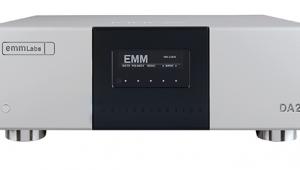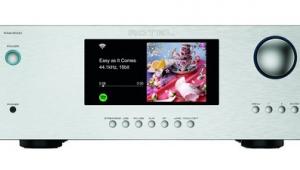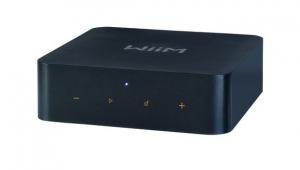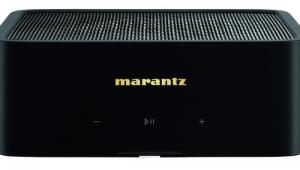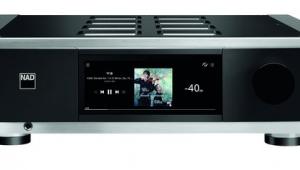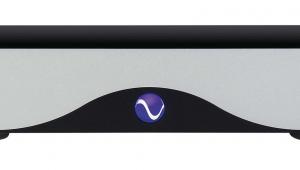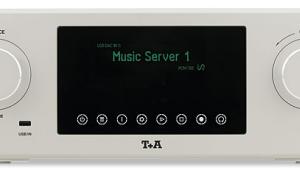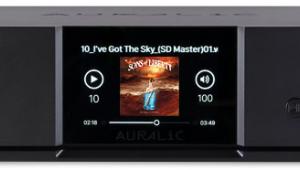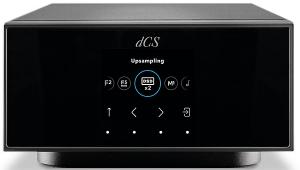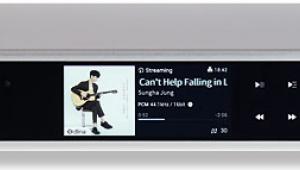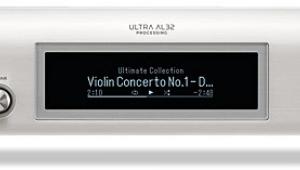Lumin D2 Music Server/DAC

 This is not quite the most affordable of Lumin's network-attached players, but the D2 looks good, is sensibly priced and – thanks to a super-slick app – is a delight to use too
This is not quite the most affordable of Lumin's network-attached players, but the D2 looks good, is sensibly priced and – thanks to a super-slick app – is a delight to use too
As the model number suggests, the £1845 Lumin D2 is the latest version of the company's affordable network audio player, the entry point for a range that started with the A1 back in 2012. And while the range has expanded, and some things have changed, much still seems the same: the D2 is compact, at just 30cm wide and a mere 6cm tall, and so light at 2.5kg that my stiffish Chord Company interconnects almost lifted it off its feet!
Unlike its predecessor, the D1, which used a computer-style offboard power supply, the D2 – available in matt black or natural brushed aluminium – now has a shielded switchmode PSU onboard, and a conventional IEC mains socket on the back. Neither is this the most affordable Lumin option, even though it's a fraction of the price of the range-topping X1, which sits at £11,595, and about a third of the cost of the current version of the A1, now selling for £5495.
Below the D2 sit two more Lumin products, in the form of the digital-out-only U1 'mini audiophile network transport', at £1695, and the even more intriguing £1495 M1, which not only includes DACs but also a 60W Class D amplifier, making it a complete 'just add speakers' system.
Flexible Friend
In fact the Lumin catalogue now runs to ten products, including a more upmarket 'network transport' and the L1 music library, available with either 2TB or 5TB of internal storage at prices starting at £895. They're all the products of Hong Kong-based Pixel Magic Systems, which was founded as a maker of AV products, developing the Crystalio range of Linux-based video processors along the way, and is now the territory's biggest supplier of HD digital TV receivers/recorders.
From the start the Lumin range has been DSD-capable, and that's still the case all the way down to the M1 and D2. In fact, although the D2's DAC isn't what you'd call cutting-edge, with one Wolfson WM8741 chip for each channel used to feed the balanced circuitry – further up the range the ubiquitous ESS Sabres start to be brandished – it's still able to handle files at up to 384kHz/32-bit and DSD128, whether from network sources or USB storage. It also allows the upscaling of lower-resolution files, with those up to 96kHz resampled to 192kHz or DSD.
So, while the D2 may be small and neat, complete with its rear casework overhang to hide messy connections, it's powerful and flexible. As well as UPnP streaming over the network, it supports online services including Qobuz, Spotify, and Tidal (with MQA decoding), Apple AirPlay, will deliver Internet radio via TuneIn and is Roon-ready, so can be combined with other Roon-ready products in a mixed-brand network.
Playing It Straight
On which subject, network connection is via wired Ethernet only, though the absence of Wi-Fi or Bluetooth functionality is no great loss in a product at this level. This is a straight down the line audiophile network player – just smaller – and does all the basics most users will ever need, to a very high standard. And of course, as is the nature of products like these, it's firmware is upgradeable via its network connection, meaning it's always possible that added features and capability can be integrated into the player at a later date.

Apart from the network connection and a brace of USB-A ports, the D2 keeps things pretty simple. There's a choice of either balanced or unbalanced analogue outputs, the former being preferable given the all-balanced internal layout, offering a choice of 'Normal' or 'Low' level, and a volume control governed via the app. In addition there's a single BNC digital output, limited to 192kHz/24-bit and DSD64 via DoP – and that's just about all you get.
You'll search in vain for anything much more than the mains lead in the box with the D2, and the hunt for any controls on the front of the unit is equally fruitless. Flip the power switch beside the mains input on the rear to its 'on' position, and you've done all the hands-on stuff possible.
Hidden Extras
There's a bit of a pause while the player initialises, showing just a blue simulacrum of the company logo on the display set deep into the front panel, and then that display comes to life, showing a simple two-line indication of the content selected.
Beyond that, you're in the hands of the Lumin app, which fortunately is excellent. This will handle not just the day-to-day operation of the D2 but also allow a wide range of set-up options and open up extras such as the multiroom capability should you have a home with more than one Lumin player in operation.
To allow that, 'multi-room' needs to be enabled on all the Lumins, and then one player is designated as the master, or 'sender', which all the others, designated as 'receivers', will follow. Multiroom operation is at 192kHz/24-bit maximum, with the sender downsampling higher rates, and converting MQA or DSD files, for transmission to the receivers.
Describing that process brings me to one criticism, which is far from unique to the D2 – there's no printed instruction manual provided beyond a single sheet quick start guide. Yes, this sheet is enough to get the player up and running but, to probe deeper into its facilities and capabilities, reference is needed to the information on the Lumin website, which is in form of a series of FAQ topics.


